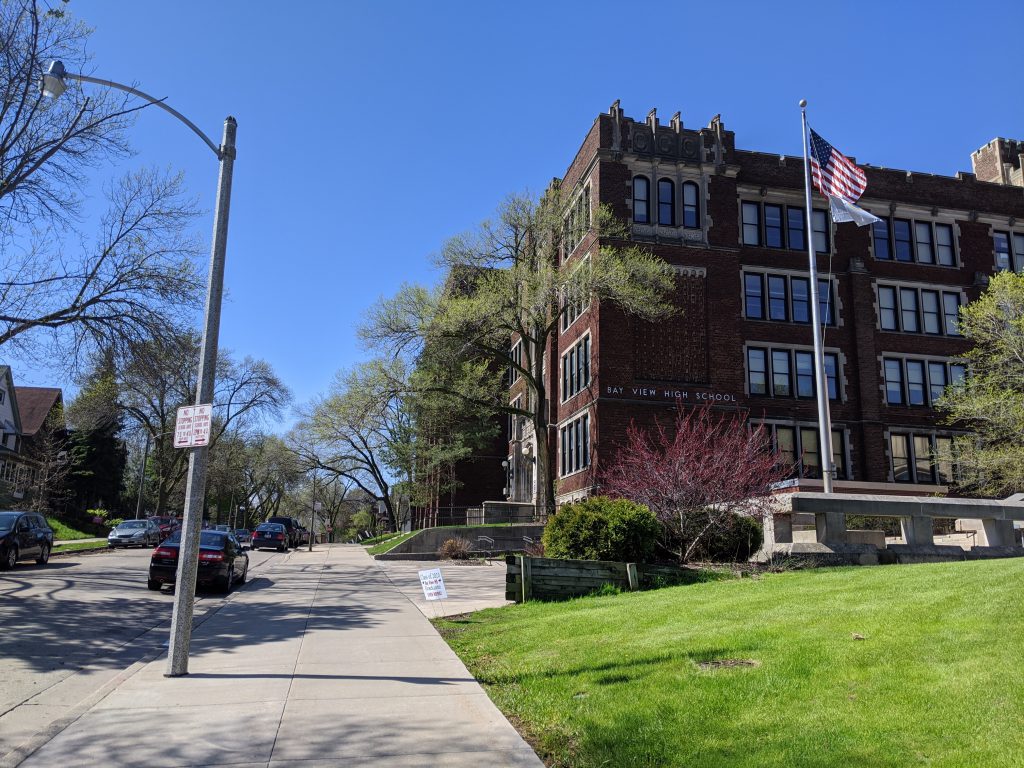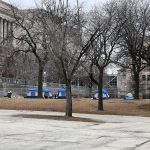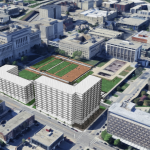MPS Reports 53 Cases of COVID-19 in Schools
COVID-19 transmission in the community is showing up in cases at schools.
Forty of Milwaukee Public Schools‘ 152 schools started classes Monday. By the end of the day, they had reported 13 cases of COVID-19, which was up to 53 by Thursday.
The cases were detected too early to have been contracted at school — doctors typically recommend getting tested for COVID-19 three to five days after possible exposure, as earlier tests usually won’t catch it — but point to a trend that will be repeated as most Wisconsin school districts start classes after Sept. 2.
Because schools can’t be separated from their larger communities, some of those cases will spill into schools, as well, said University of Wisconsin-Madison pediatric disease researcher Dr. Greg DeMuri. Those are “primary cases,” or cases of COVID-19 that were picked up at home, at birthday parties and other places in the community. He said the more concerning question is whether there are “secondary cases,” or cases of COVID-19 that were transmitted between students and staff within the school.
“Those are the ones that we really worry about,” he said. “That’s the one that tells you, ‘Hey, it’s dangerous for kids to be in school.'”
DeMuri said the breakdown of primary versus secondary cases might not be reported publicly because of student privacy concerns, but school districts and local health departments are often tracking in-school spread. However, parsing out where someone catches COVID-19 requires contact tracing.
“There are actually some school districts in Wisconsin that are not doing contact tracing and case detection, and that’s very disturbing to hear,” he said. “You don’t know if there’s something going on unless you’re really checking for it.”
Research from last year showed that secondary cases in schools were very low as long as schools were taking consistent precautionary measures, like universal mask-wearing and social distancing as much as possible. The Centers for Disease Control and Prevention, as well as DHS and the Wisconsin Department Public Instruction, have recommended universal masking and 3 feet of social distance, increasing to 6 feet when kids have their masks off to eat. However, many school districts in Wisconsin are not requiring masks this school year.
In the Burlington School District, where school won’t start until Sept. 7, 16 unvaccinated football players are already quarantining because they were exposed to another player who tested positive for COVID-19. DeMuri said that research from last year showed most secondary cases of COVID-19 in schools came from sports.
“Kids oftentimes don’t wear a mask, they socialize outside of sports — after that soccer game they go out for ice cream, or they have a spaghetti dinner before football practice, those kinds of things,” he said.
“It’s a good way to get them identified, and if it’s positive, get them home and get them isolated,” said DeMuri. “Accessible testing in schools, or near schools, can really identify kids quickly and get them out of circulation — and that protects other kids in their environment.”
The delta variant is more contagious than previous strains of COVID-19, and hospitalizations of children are up in Wisconsin and around the country. Health officials are worried that without masks, children will be more likely to spread and contract the disease. At the same time, there are fewer pediatric ICU beds to treat them because of an unusual spike in cases of respiratory syncytial virus, or RSV — a disease that usually peaks in the winter months.
“The big concern is that as infections of COVID-19 increase across the board, that could very well translate to higher numbers of children being hospitalized on top of this already interesting and unusual surge in non-COVID respiratory infections,” said Dr. Ryan Westergaard, Wisconsin’s chief medical officer, during a media briefing. “It adds some urgency to the precautions we must take to prevent transmission from reaching our schools and other settings where our young people are, because our hospital resources to take care of critically ill children are finite.”
Listen to the WPR report here.
With COVID-19 Surging, Cases Will Show Up In Classrooms. Many Will Come From Community Spread. was originally published by Wisconsin Public Radio.
More about the Coronavirus Pandemic
- Governors Tony Evers, JB Pritzker, Tim Walz, and Gretchen Whitmer Issue a Joint Statement Concerning Reports that Donald Trump Gave Russian Dictator Putin American COVID-19 Supplies - Gov. Tony Evers - Oct 11th, 2024
- MHD Release: Milwaukee Health Department Launches COVID-19 Wastewater Testing Dashboard - City of Milwaukee Health Department - Jan 23rd, 2024
- Milwaukee County Announces New Policies Related to COVID-19 Pandemic - David Crowley - May 9th, 2023
- DHS Details End of Emergency COVID-19 Response - Wisconsin Department of Health Services - Apr 26th, 2023
- Milwaukee Health Department Announces Upcoming Changes to COVID-19 Services - City of Milwaukee Health Department - Mar 17th, 2023
- Fitzgerald Applauds Passage of COVID-19 Origin Act - U.S. Rep. Scott Fitzgerald - Mar 10th, 2023
- DHS Expands Free COVID-19 Testing Program - Wisconsin Department of Health Services - Feb 10th, 2023
- MKE County: COVID-19 Hospitalizations Rising - Graham Kilmer - Jan 16th, 2023
- Not Enough Getting Bivalent Booster Shots, State Health Officials Warn - Gaby Vinick - Dec 26th, 2022
- Nearly All Wisconsinites Age 6 Months and Older Now Eligible for Updated COVID-19 Vaccine - Wisconsin Department of Health Services - Dec 15th, 2022
Read more about Coronavirus Pandemic here






















